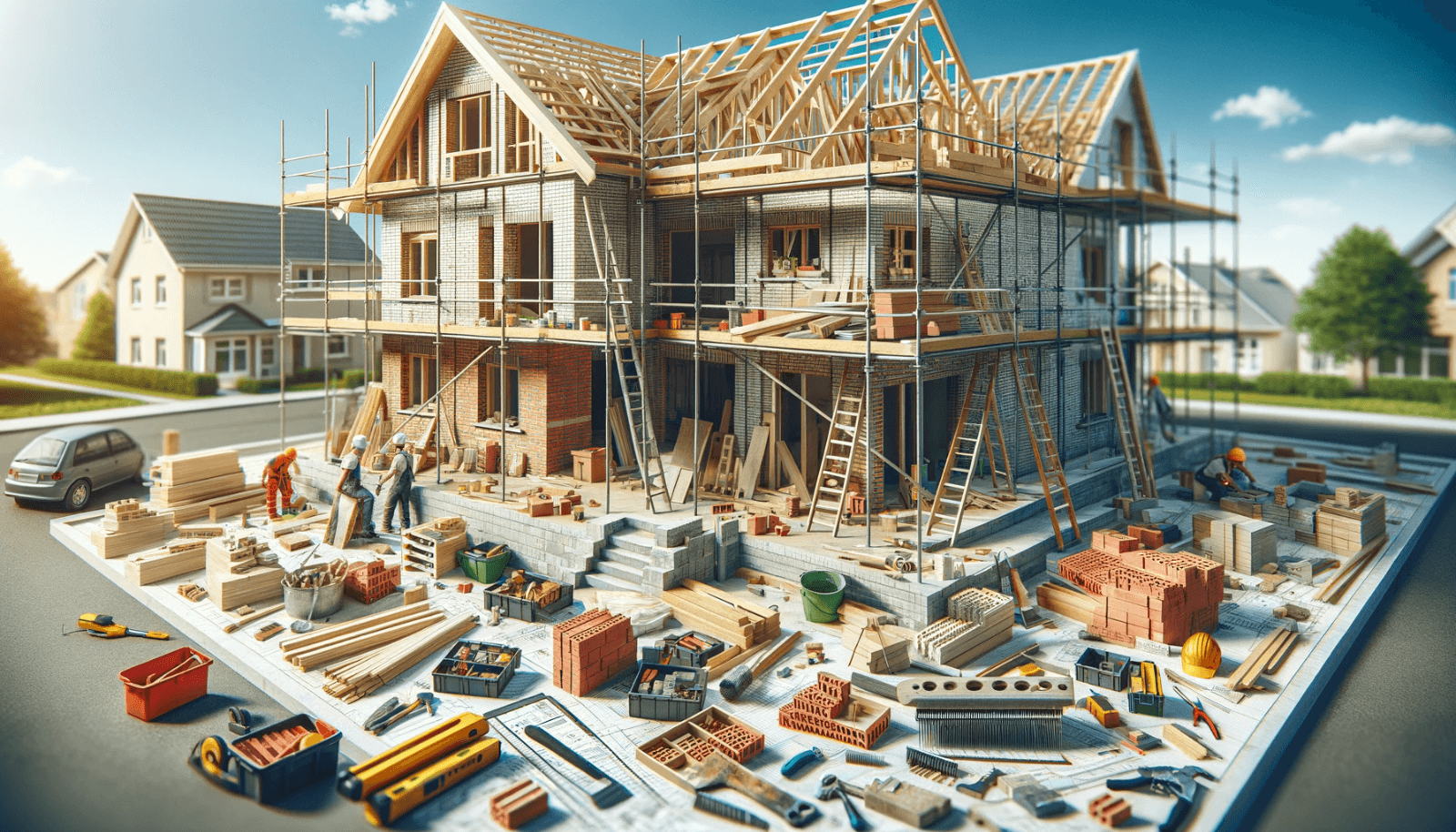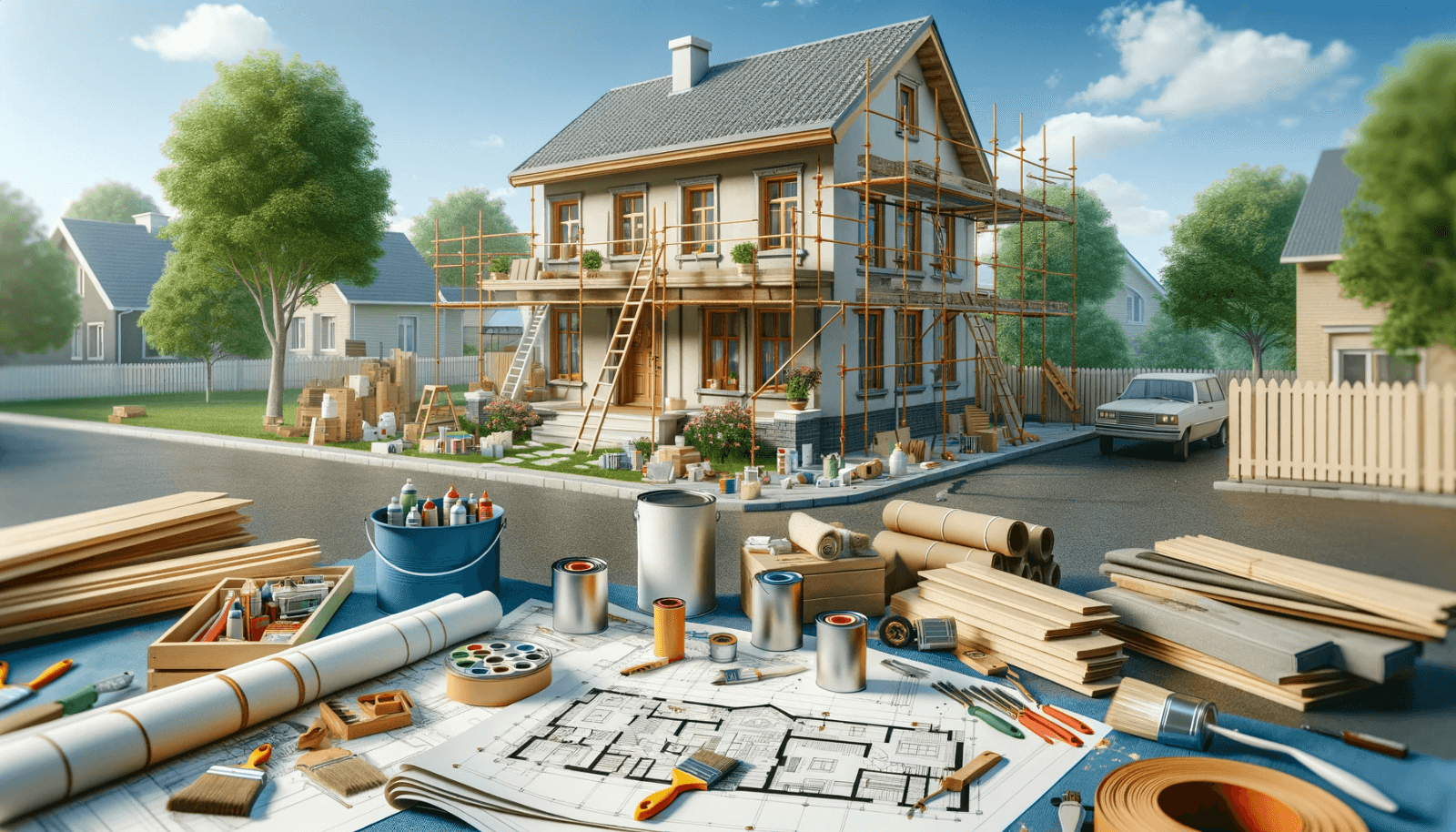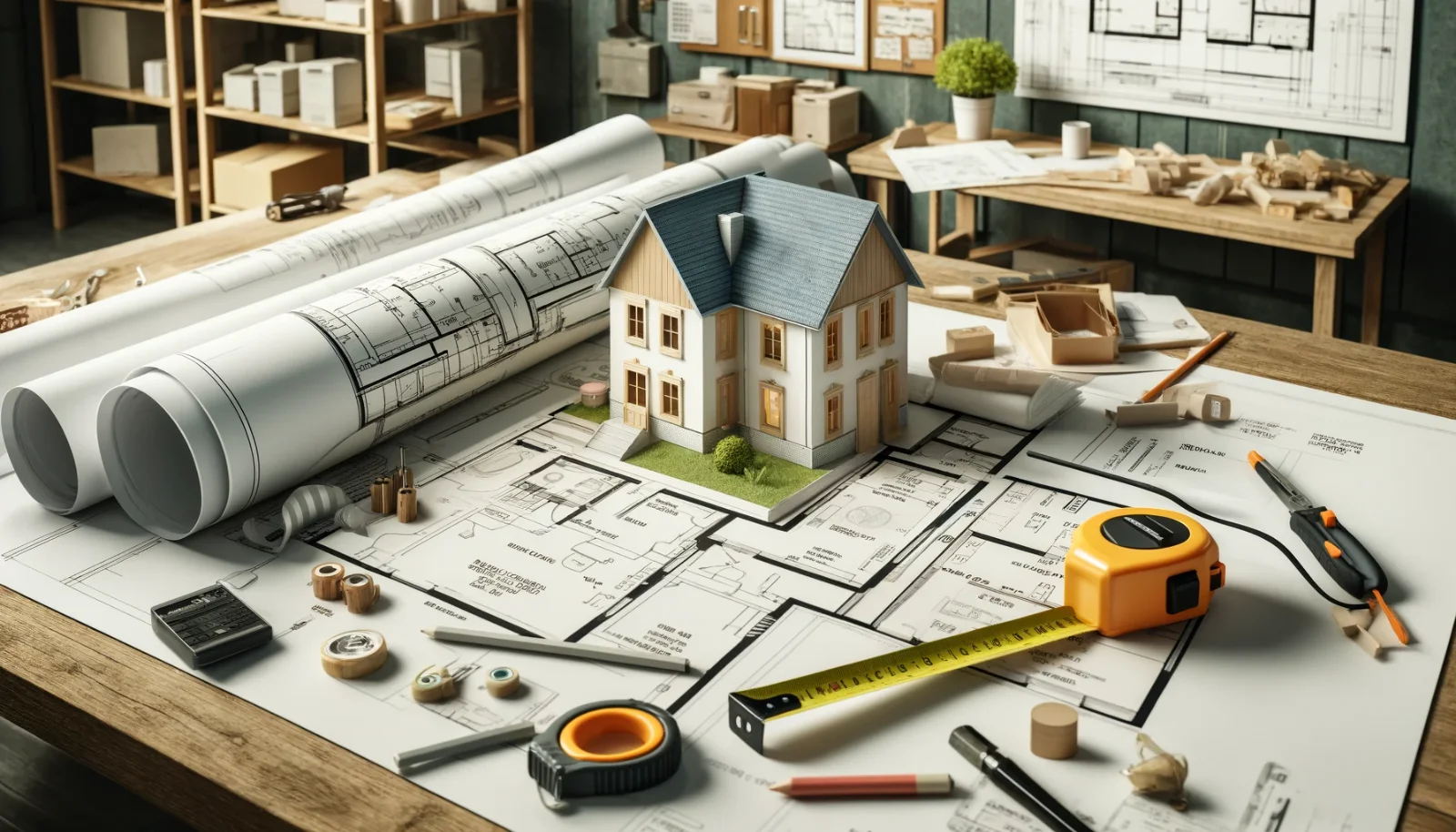If you are a homeowner looking to make some improvements to your property or a homebuyer looking to purchase a home that needs some renovations, the Fannie Mae HomeStyle Renovation Loan might be the perfect solution for you. This loan program allows you to finance both the purchase (or refinance) of a home and the cost of its renovation through a single mortgage. It's a versatile and convenient option for those who want to buy a fixer-upper or improve their existing home without the hassle of securing separate financing for renovations.

A Fannie Mae HomeStyle Renovation Loan is a mortgage program designed to help homeowners and homebuyers finance the cost of home improvements along with their mortgage. It is a conventional loan, meaning it is not backed by the government, but it does offer competitive rates and flexible terms similar to other Fannie Mae mortgage products.
Single Loan for Purchase and Renovation: One of the primary benefits of the HomeStyle Renovation Loan is the convenience of having a single loan for both the purchase (or refinance) of a home and the cost of renovations. This simplifies the financing process and can save borrowers time and money.
Competitive Interest Rates: As a conventional loan, the HomeStyle Renovation Loan typically offers competitive interest rates, which can be lower than those available through other renovation loan programs, such as personal loans or credit cards.
Flexible Renovation Options: The HomeStyle Renovation Loan allows for a wide range of renovations, from minor repairs to major structural improvements. This flexibility makes it suitable for various types of projects, including kitchen and bathroom remodels, room additions, and energy-efficient upgrades.
Low Down Payment Options: For primary residences, the down payment can be as low as 3% when combined with the HomeReady® mortgage. For second homes and investment properties, the down payment requirements are higher, typically ranging from 10% to 25% depending on the property type
Higher Loan Limits: The HomeStyle Renovation Loan can be used for primary residences, second homes, and investment properties, with loan limits that are generally higher than those of government-backed renovation loans like the FHA 203(k) loan.
Potential for Increased Home Value: By financing renovations that enhance the functionality, aesthetics, or energy efficiency of a home, borrowers can potentially increase the value of their property. This can lead to a higher resale value and greater equity in the home.
To qualify for a Fannie Mae HomeStyle Renovation Loan, borrowers must meet certain eligibility criteria. These requirements are similar to those for other conventional loans and include:
Credit Score: Borrowers typically need a minimum credit score of 620 to qualify for the HomeStyle Renovation Loan. However, a higher credit score may be required for certain loan-to-value (LTV) ratios or to obtain the best interest rates.
Income and Employment: Borrowers must demonstrate stable income and employment history. Lenders will evaluate income, employment history, and debt-to-income (DTI) ratio to ensure borrowers can repay the loan.
Down Payment: For purchase transactions, borrowers must make a minimum down payment of 3% for primary residences. Higher down payment requirements may apply for second homes and investment properties.
| Property Type | Occupancy | Max Loan to Value (LTV) |
|---|---|---|
| 1 Unit | Primary | 97% |
| 2-4 Units | Primary | 95% |
| 1 Unit | Second Home | 90% |
| 1 Unit | Investment | 85% |
| 2-4 Units | Investment | 75% |
Loan Limits: The loan amount, including both the purchase price (or current loan balance for refinances) and renovation costs, must not exceed the conforming loan limits set by Fannie Mae. These limits vary by county and are higher in counties with higher housing costs. You can view the loan limits for each state we lend in by clicking the states below:
Renovation Plans: Borrowers must provide detailed renovation plans and cost estimates from licensed contractors. The proposed renovations must be completed within 12 months of loan closing.
Eligible Property Types: The Fannie Mae HomeStyle Renovation Loan can be used for various types of properties, including: single family homes, multi-family homes up to 4 units, condominiums, townhouses and planned unit developments (PUD).

The HomeStyle Renovation Loan offers flexibility in terms of the types of renovations that can be financed. Eligible improvements include:
Applying for a Fannie Mae HomeStyle Renovation Loan involves several steps, similar to the process for other types of mortgages. Here's a step-by-step guide to help you through the application process:
Pre-Approval: Start by getting pre-approved for a mortgage by completing our online Loan Application. After completing the application, you will receive instructions on how to upload your documents. For a list of documents that you will need to upload, see our Pre-approval Document Checklist.
Find a Property: If you're purchasing a home, begin your search for a property that meets your needs and budget. If you're refinancing, you'll be working with your current home.
Plan Your Renovations: Work with a licensed contractor to develop detailed renovation plans and obtain cost estimates. Ensure that the proposed renovations are eligible under the HomeStyle Renovation Loan guidelines.
Submit Your Loan Application: Once you have a property and renovation plans, submit your loan application and documentation for loan approval.
Appraisal and Underwriting: The lender will order an appraisal to determine the current value of the property and the expected value after renovations. The loan will then go through underwriting, where the lender reviews all documentation to ensure it meets Fannie Mae's guidelines.
Loan Closing: If your loan is approved, you'll proceed to closing, where you'll sign the final loan documents. The funds for the purchase (or refinance) and the renovation will be disbursed according to the terms of the loan.
Renovation Period: After closing, you'll have up to 12 months to complete the renovations. The lender may release funds in stages based on the progress of the work, and inspections may be required to ensure the renovations are being completed as planned.

One of the critical aspects of the HomeStyle Renovation Loan is managing the renovation funds. These funds are typically held in an escrow account and disbursed in stages as the work progresses. Here's how the process generally works:
Initial Disbursement: An initial disbursement may be made to the contractor to cover the cost of materials and permits. This amount is usually a percentage of the total renovation budget.
Progress Inspections: As the renovation work progresses, the lender may require periodic inspections to verify that the work is being completed according to the agreed-upon plans and timeline.
Subsequent Disbursements: Additional funds are released in stages based on the progress of the work. These disbursements are often tied to specific milestones, such as the completion of framing, electrical work, or plumbing.
Final Inspection and Disbursement: Once the renovations are complete, a final inspection is conducted to ensure all work has been finished as planned. The remaining funds are then released to the contractor.
Contingency Reserve: It's common to include a contingency reserve in the renovation budget to cover unexpected costs or changes to the renovation plans. This reserve is typically 10-15% of the total renovation budget and can provide a financial cushion in case of unforeseen expenses.
The Fannie Mae HomeStyle Renovation Loan offers several advantages that make it an attractive option for homebuyers and homeowners:
Convenience: By combining the purchase (or refinance) and renovation costs into a single loan, the HomeStyle Renovation Loan simplifies the financing process. This can save borrowers time and reduce the hassle of managing multiple loans.
Cost Savings: The competitive interest rates offered by the HomeStyle Renovation Loan can result in lower overall borrowing costs compared to using separate loans or financing options for the purchase and renovations.
Increased Home Value: Financing renovations that improve the functionality, aesthetics, or energy efficiency of a home can increase its value. This can lead to higher resale prices and greater equity in the property.
Flexibility: The HomeStyle Renovation Loan allows for a wide range of renovation projects, from minor repairs to major structural improvements. This flexibility makes it suitable for various types of properties and renovation goals.
While the HomeStyle Renovation Loan offers many benefits, there are some potential drawbacks and considerations to keep in mind:
Complexity: The application process for a HomeStyle Renovation Loan can be more complex than that of a standard mortgage. Borrowers must provide detailed renovation plans and cost estimates, and the loan may require multiple inspections and fund disbursements.
Higher Down Payment Requirements: Compared to government-backed renovation loans, such as the FHA 203(k) loan, the HomeStyle Renovation Loan may require a higher down payment, particularly for second homes and investment properties.
Time Constraints: Borrowers must complete the renovations within 12 months of loan closing. This can be challenging for larger or more complex projects, especially if unexpected delays occur.
Potential for Cost Overruns: Renovation projects can sometimes exceed their initial budget due to unforeseen issues or changes in the scope of work. Borrowers should include a contingency reserve in their budget to cover these potential cost overruns.
To determine if the HomeStyle Renovation Loan is the right choice for your needs, it's helpful to compare it to other renovation financing options, such as the FHA 203(k) loan, Freddie Mac ChoiceRenovation, and home equity lines of credit (HELOCs).
The FHA 203(k) loan is a government-backed renovation loan that combines the purchase (or refinance) and renovation costs into a single mortgage. It offers lower down payment requirements (as low as 3.5%) and more lenient credit score requirements compared to the HomeStyle Renovation Loan. However, it has some limitations:
The Freddie Mac ChoiceRenovation loan is another renovation loan option similar to the Fannie Mae HomeStyle Renovation Loan. It also allows borrowers to finance the purchase (or refinance) and renovation costs with a single loan. One of the standout features of the ChoiceRenovation Loan is its emphasis on disaster resilience improvements. This loan specifically encourages borrowers to include renovations that enhance the home's ability to withstand natural disasters. This includes upgrades like storm shutters, foundation retrofitting, retaining walls, and other disaster preparedness measures. While the HomeStyle Renovation Loan can also be used for similar improvements, it does not have the same specific emphasis on disaster resilience.
A HELOC allows homeowners to borrow against the equity in their home to finance renovations. HELOCs typically offer lower interest rates compared to personal loans and provide flexibility in borrowing, as funds can be drawn as needed. However, a HELOC is a separate loan from the primary mortgage, which means borrowers will have two loans to manage and repay. HELOCs often have variable interest rates, which can fluctuate over time and lead to higher borrowing costs if rates rise. Also, borrowers must have sufficient equity in their home to qualify for a HELOC, which may not be possible for those with limited equity or those purchasing a new home.
The Fannie Mae HomeStyle Renovation Loan is a versatile and convenient option for homeowners and homebuyers looking to finance both the purchase (or refinance) of a home and the cost of renovations. With its competitive interest rates, flexible renovation options, and higher loan limits, it can be an excellent choice for those seeking to improve their property and increase its value. However, it's essential to carefully consider the eligibility requirements, potential drawbacks, and compare the HomeStyle Renovation Loan to other financing options before making a decision. By doing so, you can ensure that you choose the best financing solution for your renovation needs and achieve your home improvement goals. Whether you're looking to buy a fixer-upper, undertake a major renovation, or simply make some upgrades to your existing home, the Fannie Mae HomeStyle Renovation Loan can help you turn your vision into reality. Alpine Mortgage offers the HomeStyle Renovation Loan in the following locations: California, Connecticut, Florida, New Jersey, New York, Pennsylvania & Texas.
Contact us today at (800) 876-5626 to learn more about our Homestyle renovation loan programs or click here to have one of our Homestyle renovation loan specialists contact you.
If you would like to apply for a Homestyle renovation loan, you can apply online now.
Homestyle renovation loans require that the work be completed by a licensed and insured contractor.
Yes, most renovation loans have specific guidelines on what other home improvement projects can be financed. Generally, improvements must be permanent and add value to the home.
Typically, renovations must be completed within 6 to 12 months after the loan closing.
Most renovation loans include a contingency reserve that can be used in the event that the renovation goes over budget.
If you are looking to do build a house from ground up, see our Construction Loans.